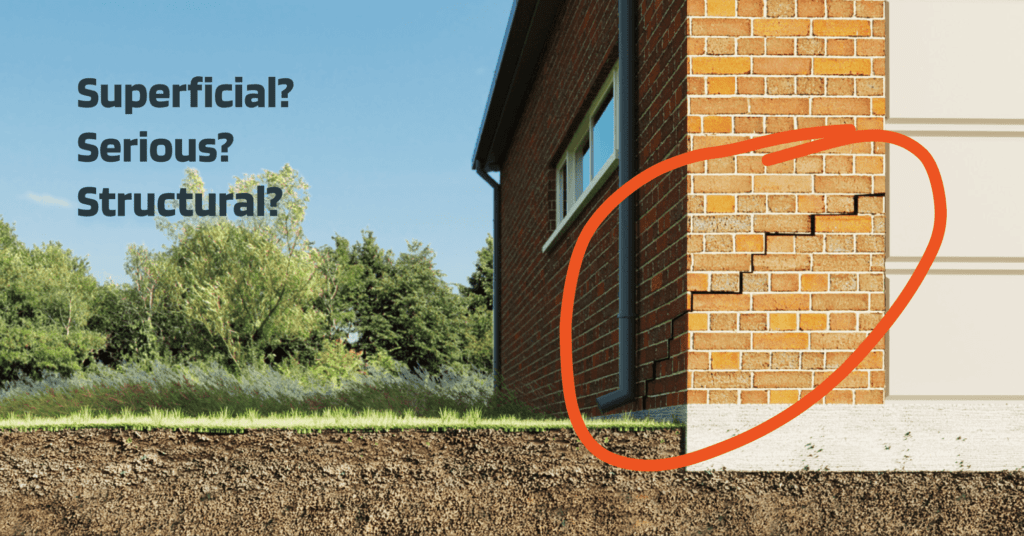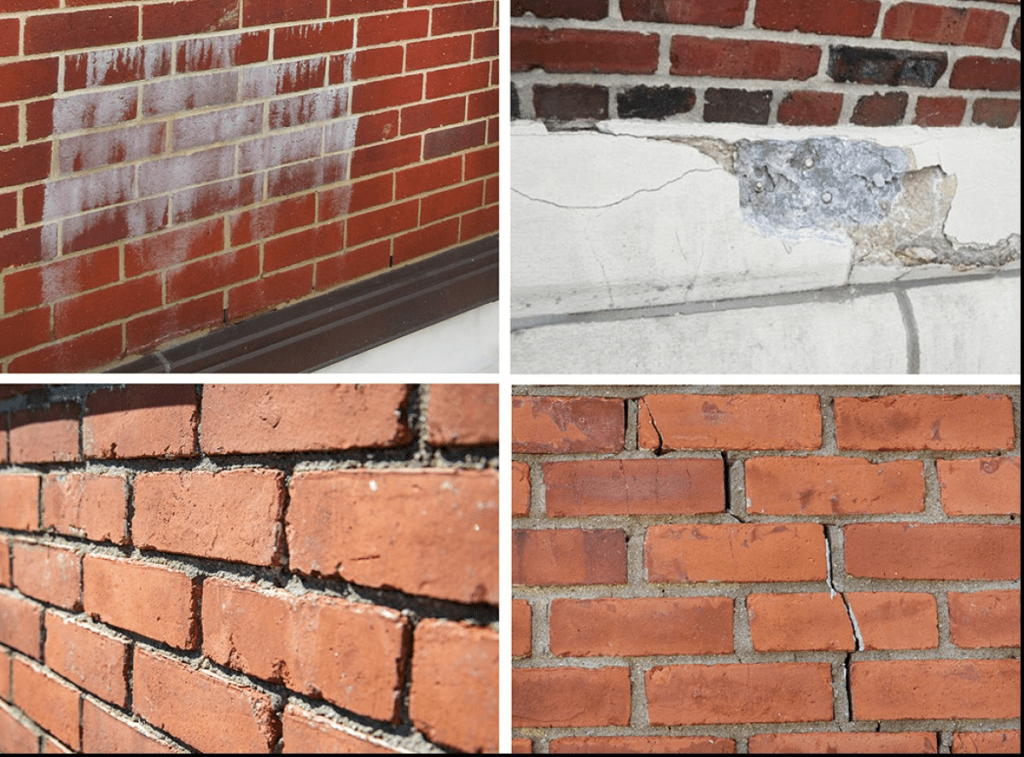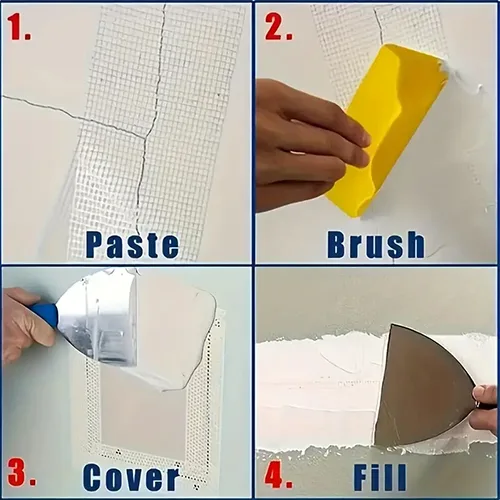- +86-13775339109
- Jessica@nq-fiberglass.cn
- No 61 Fangxian, Danyang, Jiangsu
When it comes to maintaining the durability and appearance of your home, addressing exterior wall cracks is crucial. Cracks in external walls or cracks in outside walls are not just cosmetic issues; they can also indicate underlying structural problems.
So, what causes these cracks? One of the most common reasons is the natural settlement of the building, which puts stress on the walls over time. Similarly, exposure to extreme temperature changes causes thermal movement, where building materials expand and contract, eventually leading to cracks. Moisture is another culprit—whether from rain, humidity, or poor drainage, excess moisture weakens wall surfaces.
Poor construction practices, such as insufficient reinforcement or improperly mixed building materials, can exacerbate the problem. Without proper support, the walls are more prone to structural weaknesses. External forces like earthquakes, floods, and severe storms also contribute to the formation of cracks in exterior walls by subjecting them to intense stress. Even external factors like tree roots growing near the foundation or subsidence (shifting ground) can lead to differential movement and cracks.
To effectively prevent and repair these issues, proper crack insulation is key. High-quality products like fiberglass mesh play a vital role in reinforcing the plaster layer, reducing the risk of future cracks, and ensuring long-lasting protection. By addressing the causes and using reliable solutions, you can safeguard your walls against cracks and maintain the integrity of your building.

As a homeowner, noticing exterior wall cracks can be alarming, especially if you’re unsure of their cause or severity. Let’s explore the two most common types of cracks in external walls—vertical and horizontal—and how to address them effectively.
Vertical cracks run straight up and down the wall and are often caused by poor construction practices, moisture infiltration, or natural disasters like earthquakes. These cracks may also indicate structural settlement or movement as the building shifts over time. While smaller cracks can be harmless, cracks that are growing or wider than ¼ inch should be evaluated by a professional. Ignoring them could lead to more severe issues down the line.
Horizontal cracks, which run parallel to the ground, are typically more serious. They are often caused by foundation issues, such as movement, expansive soils, or hydrostatic pressure. Other potential causes include subsidence or termite damage, which weaken the structure and result in these noticeable cracks. Large horizontal cracks, especially those caused by structural movements or water damage, require immediate attention to prevent further deterioration.
If you’re dealing with cracks in outside walls, one of the most effective and long-lasting solutions is fiberglass mesh. Here’s why it’s the ultimate choice:
Here’s a table summarizing the information you provided:
| Benefit | Description |
|---|---|
| Reinforces Plaster Layers | Fiberglass mesh acts as a durable reinforcement material for plaster or stucco surfaces, effectively preventing the formation of new cracks and protecting existing repairs. |
| Provides Superior Crack Insulation | Whether it’s vertical or horizontal cracks, fiberglass mesh enhances crack insulation, distributing stress evenly across the surface and preventing cracks from widening. |
| Resists Moisture and Weather Damage | Moisture infiltration is a leading cause of wall cracks. Fiberglass mesh is moisture-resistant and withstands harsh weather conditions, making it ideal for outdoor use. |
| Long-Lasting Durability | With its high tensile strength and resistance to UV radiation, fiberglass mesh ensures long-term protection for exterior walls, reducing the need for frequent maintenance. |
| Cost-Effective and Easy to Apply | Lightweight and flexible, fiberglass mesh is easy to install and provides a cost-efficient solution for both residential and commercial wall repairs. |
By understanding the types of cracks and taking preventive measures, you can protect your home from the risks associated with exterior wall cracks. Fiberglass mesh is a reliable, durable solution that not only addresses existing cracks but also prevents new ones from forming.
If you’re ready to reinforce your walls and ensure their longevity, contact us to learn more about how fiberglass mesh can help with your specific needs!
When you notice exterior wall cracks, it’s important to evaluate their severity to prevent further damage. As a homeowner, taking a proactive approach can help protect your property and address any potential structural issues. Here’s a step-by-step guide to assessing the condition of your cracks in external walls or cracks in outside walls:
Once the severity of the crack has been assessed, fiberglass mesh is an excellent solution for reinforcing walls and preventing further damage. It provides:
By carefully assessing the severity of your cracks in outside walls and using materials like fiberglass mesh for repair, you can ensure the stability and longevity of your exterior walls. Don’t wait until small cracks become larger issues—take action today to protect your home!

If you’re dealing with exterior wall cracks, choosing the right solution for repair and prevention is essential to ensure long-term protection for your home. One of the most effective methods is using mesh materials like fiberglass mesh or galvanized welded mesh. Let me guide you through why these materials are ideal for repairing cracks in external walls and providing reliable crack insulation.
For more significant structural issues or larger cracks, galvanized welded mesh is an excellent choice. Here’s why:
Using materials like fiberglass mesh or galvanized welded mesh not only helps repair cracks in external walls but also provides excellent crack insulation. These materials ensure that your walls remain strong, moisture-resistant, and crack-free for years to come.

When it comes to repairing exterior wall cracks, selecting the right mesh is crucial for ensuring a long-lasting and effective solution. Both fiberglass mesh and galvanized welded mesh are excellent options, but your choice should depend on several factors, such as the size of the cracks, wall material, and environmental conditions. Let me help you decide which is the best fit for your specific needs.
If you’re dealing with smaller exterior wall cracks or need an affordable and versatile option, fiberglass mesh is an excellent choice. However, for severe structural issues or larger cracks, galvanized welded mesh offers the durability and reinforcement needed for long-term results.
No matter the size or type of crack, using the right mesh will ensure that your repairs last while preventing further damage. Contact us today to learn more about how fiberglass mesh can help with your specific wall repair needs!

As a homeowner, it’s crucial to understand the different types of exterior wall cracks you may encounter and the appropriate ways to address them. Small cracks in external walls are common, especially when exposed to the elements. If you notice cracks in outside walls that are less than 5mm wide, they are often considered aesthetic issues and can be repaired easily with basic DIY techniques. However, cracks between 5mm and 25mm may signal the need for repointing or more significant repairs to ensure the structural integrity of your walls.
If the cracks in your exterior walls are caused by moisture or have stopped expanding, a DIY repair might suffice. But cracks larger than 25mm can indicate serious underlying issues, such as foundation problems, and should be assessed by a professional. Professional help is also recommended when cracks are caused by shifting or settling foundations, as identifying the root cause is essential to prevent further damage.
Crack insulation is an effective way to protect your walls from further deterioration and moisture damage, especially when combined with solutions like fiberglass mesh. Fiberglass mesh helps reinforce the plaster, preventing future cracks and offering long-lasting protection against external wall damage. Whether you are tackling minor cracks or dealing with more significant issues, understanding the type of damage and taking the right steps will ensure your exterior walls stay in top condition.

When it comes to fixing exterior wall cracks, the right repair technique depends largely on the type and severity of the crack. Cracks in external walls can range from minor cosmetic issues to signs of deeper structural problems. If you’ve noticed cracks in outside walls of your home, the first step is identifying the cause of the cracks, which will guide your choice of repair technique.
For smaller cracks, you might choose to fill the gap with a suitable filler or sealant. This method works best for cracks in external walls that are less than 5mm wide, often resulting from seasonal changes or minor settling. However, for cracks larger than 5mm, especially if they are caused by moisture infiltration, you might need to consider more advanced repair methods. Crack insulation can be an effective solution, as it helps prevent moisture from entering and damaging your walls further.
In more severe cases, consulting professionals is crucial. They can assess whether the cracks are indicative of structural issues, and suggest long-term solutions such as using fiberglass mesh. This mesh reinforces plaster and provides additional durability, preventing future cracks from forming. By choosing the right repair technique and seeking professional advice when necessary, you can ensure that your exterior walls remain strong and protected for years to come.
To effectively prevent exterior wall cracks, it’s essential to address the underlying causes such as moisture infiltration and exposure to harsh weather conditions. Moisture is one of the primary culprits behind cracks in external walls, as it weakens the wall structure over time. One way to combat this is by applying a breathable product to the walls. This helps regulate moisture levels and reduces the risk of further damage, preventing the need for costly repairs down the line.
Additionally, regular inspections of your exterior walls are crucial in spotting early signs of damage. By catching potential issues like cracks in outside walls early on, you can address them before they escalate into major problems. Regular maintenance also helps prevent water infiltration, which can weaken the structural integrity of your building.
As you maintain your walls, it’s important to consider reinforcing materials like fiberglass mesh. This mesh can be applied to prevent the formation of new cracks and ensure the longevity of your exterior walls. Staying on top of inspections and maintenance not only keeps your walls in good shape but also helps preserve the overall value of your property, ensuring it remains strong and protected for years to come.
When it comes to repairing exterior wall cracks, particularly those that are complex or extensive, hiring a professional is often the best course of action. While smaller cracks in external walls can sometimes be addressed with DIY techniques, larger or more severe cracks in outside walls require expert assessment and repair. Professionals bring valuable experience to the table, ensuring that they can properly identify the underlying issues contributing to the cracks, such as foundation shifts or moisture buildup.
Professionals are equipped with the knowledge of suitable wall crack fillers and crack seal for walls, as well as advanced materials like fiberglass mesh, which can provide long-lasting solutions to cracks. These materials help reinforce the structure and prevent future cracks from appearing, offering both cosmetic and functional benefits. By hiring a professional, you ensure that the repair is done correctly, maintaining the structural integrity of your property and preventing further damage. If you’re dealing with significant cracks, relying on professional expertise guarantees the most effective and durable repair solution
When it comes to repairing exterior wall cracks, there are some common mistakes that should be avoided to ensure a long-lasting and effective solution. One of the biggest mistakes is ignoring or simply patching up structural cracks without addressing their underlying cause. If you don’t fix the root issue, such as moisture infiltration or foundation shifting, the cracks will likely reappear, leading to repeated repairs.
Another mistake is using the wrong materials or techniques. For example, using an unsuitable filler or sealant may only offer a temporary fix, and can even compromise the structural integrity of your walls. It’s crucial to choose the right materials that match the severity of the cracks, such as crack insulation or fiberglass mesh, to provide proper reinforcement and durability.
If you’re unsure about the best repair method, it’s often wise to consult a professional. They can assess whether the cracks in external walls are purely aesthetic or indicative of more serious problems and recommend the most effective solutions. By avoiding these common mistakes and ensuring that the right materials and techniques are used, you can prevent further damage and maintain the structural integrity of your property.
16 years + Manufacturer of Fiberglass mesh & Tapes Products, Don’t miss the opportunity to get the best quality products with the most competitive price.
Factory add:Fangxian Town, Danyang, Jiangsu, China, 212333
Danyang NQ Sport And Fitness Co., Ltd
16 years + Manufacturer of Fiberglass mesh & Tapes Products, Don’t miss the opportunity to get the best quality products with the most competitive price.
Factory add:Fangxian Town, Danyang, Jiangsu, China, 212333